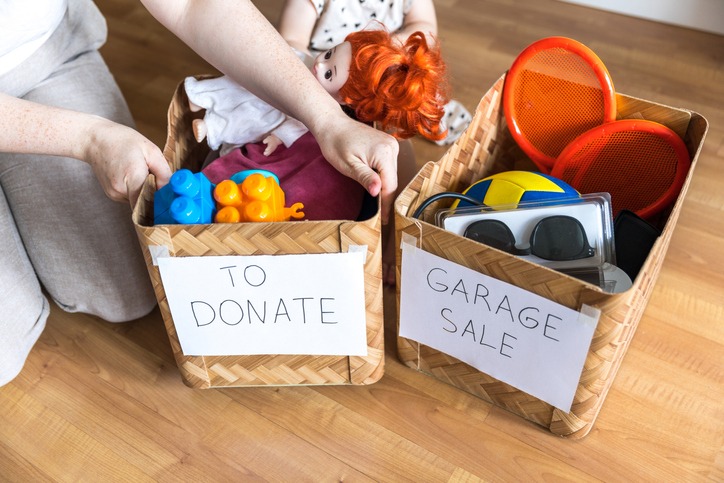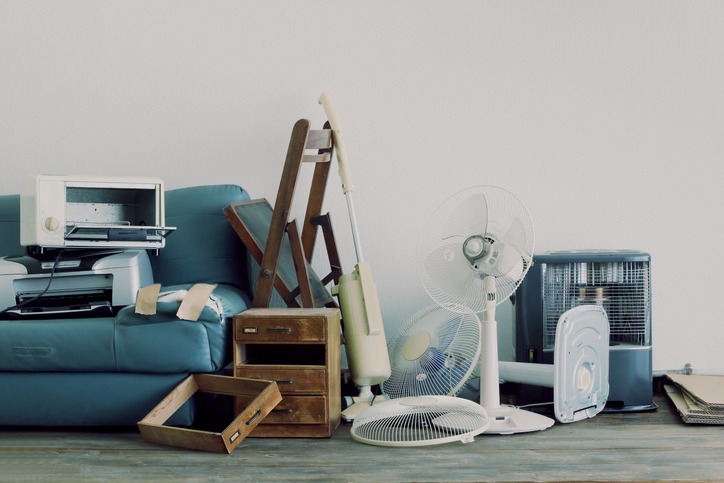Swedish death cleaning, or döstädning in Swedish, isn’t as gruesome as it sounds. In reality, it’s a way of life centered around getting rid of your stuff by asking yourself, “Will anybody be happier if I save this?” Swedish death cleaning gives Marie Kondo’s cleaning ideology or the 15-minute rule a run for their money.
This method of organizing and decluttering your living environment is beneficial for anyone who struggles with clutter and letting go. This article will define death cleaning and show you how to accomplish it.
What Is Swedish Death Cleaning?

The term “Swedish death cleaning” may sound strange, but it’s a reasonable way to approach your possessions as you approach the end of your life. Consider it senior minimalism, but you’ll discover that it’s something you can practice at any age.
Margareta Magnusson, a Swedish novelist, popularized the method in her book The Gentle Art of Swedish Death Cleaning. She explains döstädning, which means “death cleaning.” The goal is to streamline your life before you die to relieve the load on those you leave behind.
It’s a thoughtful thing to do for those you care about. Sorting through your stuff after you’ve passed away is a terrible burden to place on somebody, so scrap them now to make it easier for them.
How to Accomplish Swedish Death Cleaning
According to the Swedish death cleaning method, living with less by giving away will allow you to live a happier life. This may not be easy, and it may even be emotional, but it will most likely be worthwhile in the end. Here’s how to simplify your life and start downsizing.
Inform Your Loved Ones
Involving those close to you is a key aspect of Swedish death cleaning. This holds you accountable and enables you to share moments with the people you care about.
Consider things from a good standpoint. Share your family history, experiences, and tales with your children and grandchildren that you might not have told them otherwise. This process can assist in bringing these memories to life.
Friends and family can help you clear things out, move large pieces that you wouldn’t be able to move alone, and even mark which of your possessions they might want to keep, either now or when you’re ready to part with them.
Begin With Less Personal Stuff

Closet organizing is a wonderful place to start because it’s easy to identify accessories or items you no longer use to discard. It will help you gain momentum as you go on to other areas of the house and, eventually, to more sentimental items such as letters and photos, which may be more difficult to part with.
Make the procedure more enjoyable by calling a buddy over, cracking open a bottle of wine, and asking their opinion on the things or garments you are undecided about. If you’re having trouble, have a friend hold up an item and then give you a swift yes or no without hesitating; the less you concentrate on it, the easier it is.
However, this may not be everyone’s reality. There is no one-size-fits-all method to Swedish death cleaning. What you keep or toss depends on your degree of comfort, who you are saving items for, your needs and lifestyle, and how much room you have in your home.
Make sure you have what you need in your life right now. Books and clothing are simple to get rid of. Clear out all your work clothes if you’re in a transition period, such as transitioning from a working to a retired lifestyle. Things in multiples, such as kitchen gadgets and utensils, can be paired down.
Regularly Declutter
As previously said, Swedish death cleaning is not gruesome – it is a way of life. It is also not limited to individuals in their golden years.
Make it a habit to declutter. If you realize that you aren’t using something frequently, keep a bag or box on hand to create a running collection of give-away things. Consider the material items in your life and be honest about what they signify.
Gradually Give Away Possessions
It is critical to consider the new habitat where your object will be situated as you perform your tasks. Don’t offer items that don’t fit the recipient’s space or taste; careful consideration in deciding on a new ideal home will delight both you and the recipient. It’s a joy to know that something will find a new home and be well used.
Give things away with intention and thought. Because these pieces are significant to you, be certain that they are given to individuals who will enjoy and care for them the same way you do.
Donate What You Can and Sell the Rest

Once you’ve accumulated a pile of things to dispose of, get it out of your home as soon as possible. Otherwise, you can go backward.
Suppose you can’t find somebody to give your belongings to, sell them, and donate the proceeds to charity. If you don’t do a death clean and show people what’s valuable, there will be a large truck that takes all the great things you have to auctions (at best) or a dump after you die.
Make a Physical Copy of All of Your Computer Passwords and Documents
It’s not only a good idea to keep important passwords and documents for yourself, but it’s also a must for your family. Make a physical duplicate of your computer passwords, and gather important bank documents and other related material that may be difficult to locate after your death but is critical.
Keep Memorabilia for Yourself
You’re getting rid of objects that no longer benefit you, but because you’ve owned them for a long time and they have sentimental value, it might be difficult to let go.
Swedish death cleaning can be a difficult emotional experience. When selecting what’s important to preserve, consider what it means to you.
It’s fine to wish to save yearbooks, old love letters, and other personal mementos if you can clearly explain why they’re important. But just because they’re nostalgic for you doesn’t guarantee they’ll be sentimental for others. Keep them in a box labeled “throwaway” to be thrown away when you’re no longer there to enjoy them.
Pushing yourself somewhat harder than you’re comfortable with when it comes to getting rid of things — perhaps parting with a few more stuff than you believe you can — will help you recognize that you can live with less. While you may believe that your current way of life is the greatest for you, you won’t know for sure till you try something new.

